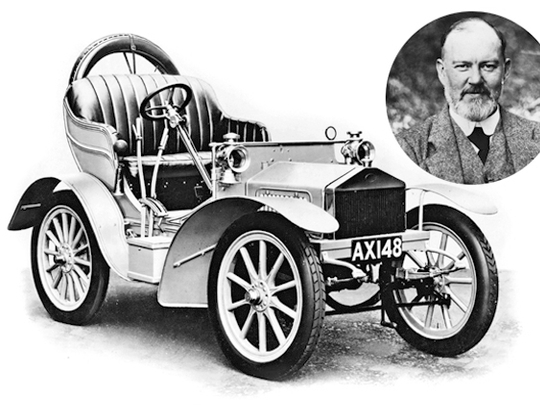
It’s not easy to assert your independence amongst four siblings, much less so when you’re the youngest. Things became even more difficult for little Henry Royce when his father died in abject poverty at the age of 41, leaving the nine-year-old boy to carve a life path out of nothing. But nothing is all that the ingenious Royce needed.
By the time he turned 17 even his lack of education couldn’t stop him, and the teenage Henry toiled for one penny per hour at a toolmaker after completing an apprenticeship with the Great Northern Railway. His climb up the engineering ladder strayed towards electricity and its applications when he answered a newspaper ad by the Electric Light and Power Company in London.
In just a couple of short years Royce was promoted to chief electrical engineer, thanks in part to his complete disregard of social and recreational life and his devotion to after-hours education in order to catch up on what his childhood surrounded by poverty couldn’t provide.
With £20 saved up from four years of employment, in 1884 the 21-year-old founded F H Royce & Co and, led by its mastermind, the company innovated and established much better electrical applications than its rivals. By 1899, Royce’s £20 gamble turned into £30,000 — today’s equivalent of about £7 million, or about Dh40 million.
Unfortunately that very year also ushered in a recession and a slump in trade. However, even staring bankruptcy in the face, Royce refused to cheapen his products and accept lower standards of quality to survive. “Strive for perfection in everything you do. Take the best that exists and make it better. When it does not exist, design it,” he once said famously.
Instead, Royce would diversify, and his new purchase, a De Dion automobile, gave him some ideas. A subsequent vehicle, a two-cylinder Decauville, led him to cure repeated mechanical issues with the car and improve its many components, exacting the same quality standards as with his company’s work.
After a while Royce realised that instead of constantly tinkering with the little French automobile, he would just build the very best, from the start. His simple engineering philosophy — the pursuit of excellence — was on its way.
In no time at all, in fact by 1907, through a partnership with Charles Rolls, the new motor car manufacturing company Rolls-Royce Limited was producing one of the best cars in the world: the Silver Ghost.
More than a century later, his pursuit of excellence continues at Rolls-Royce’s Goodwood factory, and the legacy of this genius engineer carries on.











